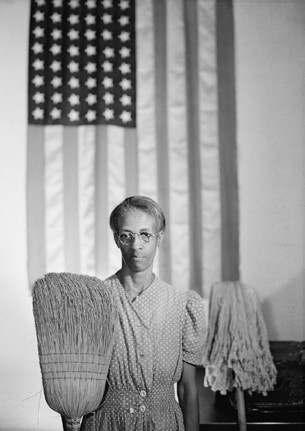Breadcrumb
- Home
- Research and Engagement
- Symposium
- Symposia Abstracts and Speaker Bios
- 2016
- James Swensen, "On Common Ground: Grant Wood and the photography of the Farm Security Administration"
"On Common Ground: Grant Wood and the photography of the Farm Security Administration"
"On Common Ground: Grant Wood and the photography of the Farm Security Administration"
Main navigation
-
Symposia Abstracts and Speaker Bios
-
2016
- Erika Doss, "Screwball Regionalism: Grant Wood and Humor During the Great Depression"
- Kerry Dean Carso, "Grant Wood and the After-Life of Victorian Architecture"
- James Swensen, "On Common Ground: Grant Wood and the photography of the Farm Security Administration"
- Annelise K. Madsen, "'Something of color and imagination': Grant Wood, Storytelling, and the Past’s Appeal in Depression-Era America"
- Jason Weems, "Grant Wood's Regionalist Camouflage"
- Sue Taylor, "In Springtime: Myth and Memory in Grant Wood's Last Paintings"
-
2018
- Betni Kalk, "Artist-Community Collaborative Murals"
- Carrie Ida, "On the Line and Community Engagement"
- Jane Gilmor, "Within and Without: A Socially Engaged Art Practice Investigates the Invisible Worker, Poverty and Community Building"
- Fereshteh Toosi, "Learning in Public: Socially-Engaged Art and Experimental Education"
- David Bright, "Permission, Ownership, Copyright, and Preservation, and Sale of Public Art"
- Lynn Verschoor and Scott Wallace, "Public Art, Private Funds"
- Mandy Vink, "How Saying No to YES became the Catalyst for Boulder's Public Art Program"
- Jen Krava, "Codified Bodies: Tools to Measure Social Liberation and Inculcate Cultural Change"
- Traci Molloy, "Against My Will: A Multigenerational Collaboration with Sexual Assault Survivors from Alfred University"
- Michael LeClere, "Art as an Avenue to Promote Industry, Manufacturing, and Placemaking Amidst the Decline of America's Bread Basket, Rust Belt, and & Rural Communities"
- Desmond Lewis, "Grit and Grind: Memphis Bred Me"
- Dan Perry and Tom Stancliffe, "Public Art Incubator: Fabricating Community Engagement Through Public Art"
-
2022
- Valerie Balint, "Yesterday and Tomorrow: Re-framing the Historic Artists’ Homes and Studios Program"
- Joni Kinsey, "Grant Wood’s Studio-Homes: From Hayloft to Mansion, Overalls to Hollywood"
- Olivia Armandroff, "Tiling a Life: Henry Chapman Mercer and His Fonthill Castle"
- Michael Clapper, "Living the Dream: Maxfield Parrish and The Oaks"
- Karen Zukowski, "The Past and Future of Henry Varnum Poor's Crow House"
- Lisa Stone, "Home Based and Life-Specific: Artist-Built Environments"
- Zac Bleicher, "Edgar Miller’s Handmade Homes and Studios of Interwar Chicago"
- Sarah Rovang, "'Thinking on a Wall': Home, Space, and the Creative Practice of Georgia O’Keeffe"
- Daniel Belasco, "The Artist as Builder: Al Held’s Barn Studio, 1965–2005"
- Sean Ulmer, "The Grant Wood Studio: A Space Transformed and Transformational"
- Victoria Munro, "Alice Austen House"
- Helen A. Harrison, "'The Country is Wonderful': Jackson Pollock and Lee Krasner in The Springs"
-
2025
- Maya Harakawa, "Benny Andrews and the Problem of Regionalism"
- Erika Schneider, "Inclusive Regionalism: Meta Vaux Warrick Fuller’s Water Boy"
- Carey Rote, "Antonio E. García: South Texas Regionalist"
- Gina Gwen Palacios, "Frontera Regionalism: Art from the Borderlands"
- Liz Kim, "Regionalist Views of Amado M. Peña’s Chicano Movement Posters"
- James Denison, "Beyond Midwestern Realism: Racialized Regionalism in Comparative Perspective"
- David Ehrenpreis, "'Savage Iowa:' Grant Wood’s Vision of Native America"
- Christopher Atkins, "Reimagining Rural America: Grant Wood’s Corn Room"
- Paolo Morales, "Memphis Tulips and Flowering Dogwood: Exploring Racialization of the Photograph through Encounters as an Asian-American"
- Christopher-Rasheem McMillan, "Performing Christian Nationalism in the Midwest: Race, Ritual, and the Other"
-
2016
Abstract

When Gordon Parks captured Ella Watson in the guise of Grant Wood’s American Gothic in 1942, it confirmed a connection that was already well entrenched by the time the young artist photographed the Washington D.C. charwoman. While Parks’s photograph represents the most obvious link between the photographers of the Farm Security Administration (FSA) and the important regionalist, it was by no means the only way in which Wood, his paintings, and his ideas were manifested in the extensive work of the New Deal agency. Not only did they share a similar subject matter in rural America, but they also possessed an interest in detailing the lives of Midwestern farm families. Indeed, when in 1935 Wood spoke of the nation turning inward to awaken “non-urban” values, he would have found a ready audience in Roy Stryker, head of the FSA’s photographic efforts, and many of his employees.
This paper seeks to explore the interplay between Grand Wood and the photography of the FSA. It will investigate Wood’s influence and the ways in which it touched upon the work of FSA photographers working in the Midwest like Russell Lee, Arthur Rothstein, and others. While these photographers may not have posed their subjects like Parks, they shared much in common with the Iowan painter. At the time, the representation of rural American was not separated by medium.
Rather, through federal sponsorship of the arts and other means, there was rich interplay of imagery that engaged artists of all types during the 1930s. On Common Ground, therefore, will reunite these two bodies of work to see what they reveal about each other, Iowa, and the American scene.
Watch the presentation on YouTube. NOTE: This presentation runs from 48:22 through 1:23:11 during the video.
About the presenter

Dr. James R. Swensen is an associate professor of art history and the history of photography at Brigham Young University. His research interests include documentary photography, the art and photography of the American West and the Grand Tour of Italy. He has recently completed two books on photography: Picturing Migrants: The Grapes of Wrath and New Deal Documentary Photography (University of Oklahoma Press, 2015), and In a Rugged Land: An Investigation of Ansel Adams and Dorothea Lange’s Three Mormon Towns Collaboration, 1953-1954. His chapter “Maynard Dixon and the Forgotten Man,” appeared in the anthology Locating American Art (Ashgate Press) in 2016.